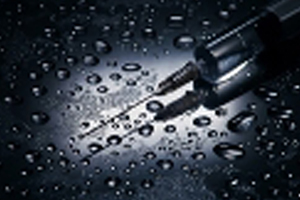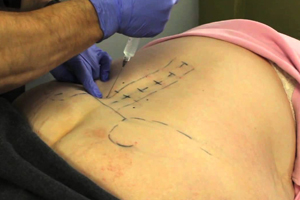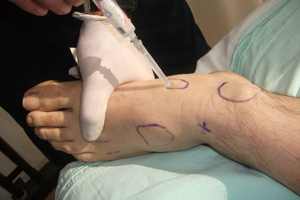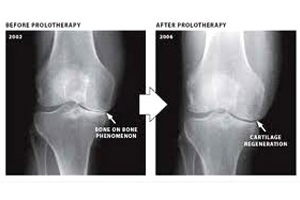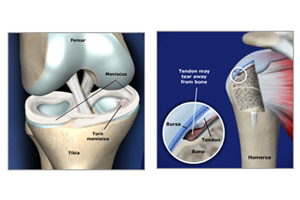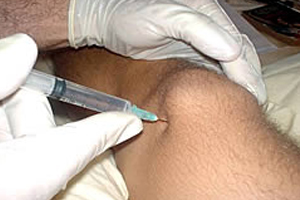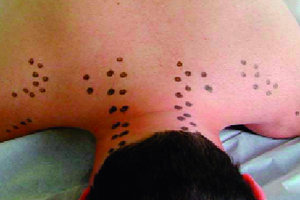Proliferative therapy, also know as prolotherapy, is a method of injecting an anesthetic and an irritant (usually containing dextrose and fish oil) into joints, ligaments or tendons that are weakened, torn or pulled. It is a non-surgical method by which ligaments and tendons are repaired, resulting in strengthening of the weakened connective tissue by using the body’s own healing powers.
It is important to understand that the purpose of this treatment is to strengthen these weakened areas, and not to decrease pain. The decrease in pain usually results from the increased stabilization and ability for the muscles to relax. Prolotherapy is useful in the treatment of:
Overuse injuries
Ligament or tendon dysfunction (sprain, strain, and tendonitis)
Bursitis
Arthritis
Degenerative discs
Proliferative therapy is not a new concept. It was first used by Hippocrates to heal wounded soldiers. He would use a hot poker over shoulder injuries to stop bleeding, and noticed the added healing benefits that resulted in the ligaments and tendons.
Injections using irritant solutions were first used in the late 1800s. It was further developed in the 1940s by Dr. George Hackett, and long-term studies were done by Dr. Gustav Hemwall from the 1950s through the 1990s.
With prolotherapy, an injectate is injected into the lax or torn areas causing a stress inflammation. This inflammation results in the proliferative cells migrating to the weakened area, allowing for growth of new, strengthened tissues. This is how prolotherapy provides a mechanism by which the body can work toward healing itself.
Prolotherapy helps stimulate the body to make collagen. This is accomplished through a series of injections, not of collagen, but of a mild chemical or a natural irritant such as dextrose (sugar), which stimulates an immune response facilitating the body to produce collagen naturally. The immune response is facilitated because the procedure causes a stress inflammation (unlike that caused from an infection) and the body responds to this, thereby starting the repair process. The procedure increases the number of fibroblasts, which synthesize collagen.
The making of new collagen facilitates tissue repair, which allows for strengthened and restored tendons, ligaments and joints, and ultimately translates into more significant and/or permanent pain relief. There is no evidence that this process causes scarring in the area of the injections. The advantage of prolotherapy is that it does not interfere with the patient’s activity level during treatment (activity can continue at work, exercise and play), and there is no postoperative recovery time.
Several different types of injections have proven to be successful in prolotherapy (chemical irritants, osmotic agents, and particulates). Each works in different ways to motivate the body to heal itself through a variety of natural responses. The end result with each injection is the same: facilitate healing by building new tissue, restoring joint stability, and eliminating the source of the pain.
All of the solutions used in prolotherapy are a combination of anesthetic and proliferant so that they provide a dual effect. The anesthetic agent alleviates the "pain trigger," while at the same time the proliferant agent begins to strengthen the ligaments and tendons at the trigger points or tender points. The proliferant agents employed have unique qualities and can be used separately or in combination with each other, depending on the individual needs of each patient. The agents and their qualities are as follows:
Chemical irritants include mild chemical irritants and chemotactic agents.
Mild chemical irritants, such as phenol or tannic acid, trigger the healing process by attaching themselves to the walls of the cells wherever they are injected. This causes an irritation/inflammation that stimulates the body to produce collagen and start the healing process.
Chemotactic agents are proliferants that attract macrophages directly to the injected area (e.g., Morrhuate Sodium, which is a fatty acid derived from cod liver oil and is the most commonly used). These macrophages (cells in the body) “clean up” debris associated with inflammation.
Osmotic agents work by causing cells to lose water, which leads to inflammation and the subsequent stimulation of the healing response. Dextrose and glycerin are two of the main ingredients in standard prolotherapy solutions.
Particulates such as pumice flour are microscopic particles that attract macrophages. The macrophages secrete growth factors that result in collagen production.
Sometimes cofactors, such as the anti-oxidant mineral manganese or a combination of glucosamine sulfate and condroitin sulfate, are believed to aid in the repair of arthritic joints or degenerative discs.
All joints respond to treatment. In fact, the treatment has also been successful in cases involving almost all types of:
Back pain - degenerative disc disease
Bone fractures and arthritis
Unstable joints
Heel spurs
Rotator cuff tears
Knee-joint problems
When should you consider prolotherapy?
When you have trouble sleeping on your shoulders due to pain, or if you have shoulder pain when moving or lifting your arm
If you suffer from joint dislocation
When a joint is generally worse with activity and better with rest
When chiropractic adjustments help but do not last
When you experience grinding, popping, or clicking in a joint
When muscle relaxants, arthritis medication, cortisone shots or nerve blocks fail to resolve the problem within six weeks
When surgery has failed
When a joint is aided by a sling, brace or splint
If ligament or tendon sprains, or tears have been diagnosed
If there is a deep aching or pulling pain in the joint
If you experience shooting pains, tingling or numbness
If you have musculoskeletal pain:
Arthritis
Back pain
Neck pain
If you have any of the following:
Fibromyalgia
Sports injuries
Unresolved whiplash injuries
Carpal tunnel syndrome
Chronic tendonitis, partially torn tendons
Degenerated or herniated discs
TMJ
Sciatica (prolotherapy is not a treatment for sciatica, but for symptoms that mimic the symptoms of sciatica)
Joint instability
Post-surgical back and neck pain
This is an individual matter depending on many factors. The goal of prolotherapy is to help each patient optimize return to function through proper therapy and exercise. The maximum benefits are achieved when full strength and endurance are reached and posture is improved.
The degree of ligament/joint laxity and underlying arthritis will impact the number of treatments. In general, we recommend starting with 3-5 sessions of injections performed at three- to four-week intervals. We then recommend waiting three months to determine if further injections are indicated.
Unlike steroid injections, the benefits of prolotherapy evolve gradually, thus patience is encouraged with the healing process; it is beneficial to set reasonable expectations relating to the time frame for healing. The ultimate goal of prolotherapy is to allow each patient to be able to do more physical activity with less pain.
Links : American Association of Orthopedic Medicine


